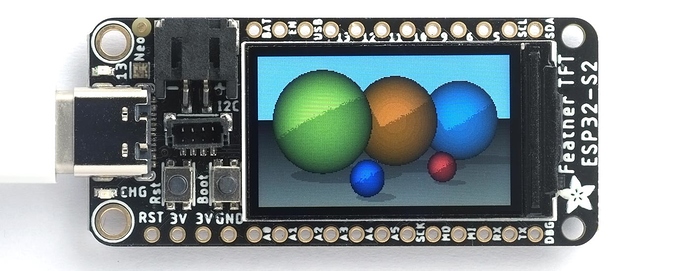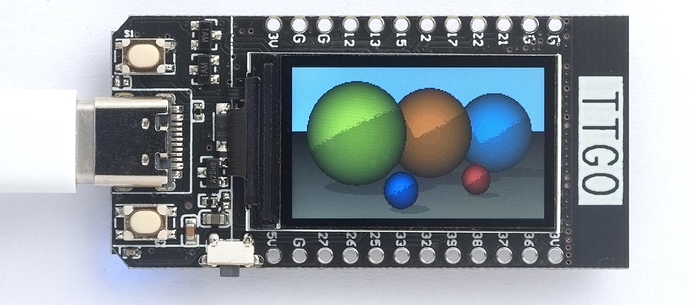The latest release of the ESP version of uLisp, 4.3b, now supports the uLisp graphics extensions on a couple of ESP32 boards with an integral TFT display, making it easy to write programs that plot points, lines, shapes, and text on these displays.
Adafruit ESP32-S2 TFT Feather
The Adafruit ESP32-S2 TFT Feather adopts the same format as Adafruit’s other Feather boards, and incorporates a 240x135 colour TFT display:
It has a USB-C connector, and uses the ESP32-S2’s native USB, avoiding the need for a UART chip.
It has the same specification as their ESP32-S2 Feather: it provides 4 MB flash and 2 MB PSRAM, and includes a JST connector for a Lipo battery, a Lipo charger to allow the battery to be charged from the USB port, and an I2C LC709203 battery monitor chip. The board also has a QWIIC/STEMMA QT connector for connecting I2C modules.
TTGO T-Display
The TTGO T-Display from Chinese company LILYGO is based on an ESP32, and incorporates the same 240x135 1.14" colour TFT display:
It has a USB-C connector, and uses a CH9102 USB to serial chip. It provides 4 MB flash but no PSRAM, and includes a JST connector for a Lipo battery. It provides a reset button on the side of the board, and two user buttons each side of the USB connector.
For information about the I/O pins and interfaces see: TTGO ESP32 TFT Pinouts.
The photographs show the boards running the following uLisp ray-tracing program: Ray tracing program 240x135 TFT, which is a version of the program described in Ray tracing with uLisp.
To download the latest version of uLisp for ESP boards see: Download uLisp.
For more information about installing uLisp on these boards see: ESP32 boards with a TFT display.


